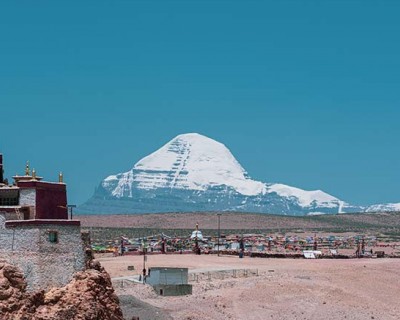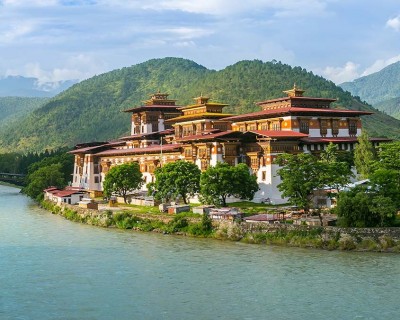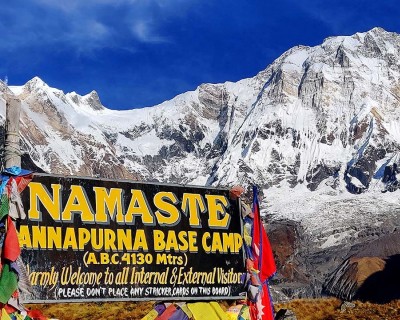12 Days Manaslu Trek Outline Itinerary
During your 12 Days Manaslu Trek, you can expect the following itinerary, depending on the trekking package you select and the highlights, the itinerary plans may differ from the other packages.
Day 1: Driving from Kathmandu to Machha Khola (850 meters/2788ft)
Day 2: Trekking from Machha Khola to Jagat (2,095m/4,395ft)
Day 3: Jagat to Deng (1,340m/4396ft) trek
Day 4: Trekking from Deng to Namrung (2660 m | 8,727 ft)
Day 5: Namrung to Lho (3180m/10433ft)
Day 6: Trekking from Lho to Samagaun (3520m/ 11549ft)
Day 7: Acclimatizing day at Samagaon
Day 8: Trekking from Samagaon to Samdo (3,875m /12,713 ft)
Day 9: Samdo to Dharamsala ( 4,450m / 14,596 ft) trek
Day 10: Trekking from Dharamsala to Bimthang (3,720m / 12,201 ft)
Day 11: Bimthang to Dharapani (1860m / 6,102 ft) trek
Day 12: Drive back to Kathmandu (1440m / 4724 ft) from Dharapani
Best Season for 12 Days Manaslu Trek
.jpg) If you have any previous trekking experience in Nepal, then you understand the delightful trail and beauty of traveling in the peak seasons. Like any other high-altitude trekking adventures and expeditions, the ideal time period for the 12 Days Manaslu Trek is also considered to be during the peak seasons like autumn (September, October, and November) and spring (March, April, and May).
If you have any previous trekking experience in Nepal, then you understand the delightful trail and beauty of traveling in the peak seasons. Like any other high-altitude trekking adventures and expeditions, the ideal time period for the 12 Days Manaslu Trek is also considered to be during the peak seasons like autumn (September, October, and November) and spring (March, April, and May).
The unprecedented beauty, warmer climatic conditions, stable weather, dry trekking trails, and just breathtaking clear views of the Himalayas make the peak seasons the top choice more the most memorable and comfortable experience.
Even among the peak seasons, autumn is considered to be the first choice for trekkers due to the moderate temperatures ideal for outdoor adventures, stable weather, fresh lush landscapes washed by the monsoon rain, and magical unobstructed views of snow-clad peaks beneath the clear blue sky.
The temperature of the Manaslu region hovers around 13°C to 18 °C during the daytime in autumn and can drop to minus degrees at the higher elevation points. You need to pack right if you traveling during the latter part of this season, especially in late November which sees light snowfalls at higher altitudes.
Similarly, another popular peak season for the 12 Days Manaslu Trek, spring, is particularly known as the blooming season in the Himalayas. The lower Manaslu region is covered by bright rhododendrons and wildflowers, and the charming streams and brook along the trekking trails make it seem like you have entered a fantasy land.
The Himalayan flora and fauna are also at their peak during this season that’s why the 12 Days Manaslu Trek is a not-to-miss adventure for nature lovers. If you want to explore the endangered birdlife and wildlife of the Manaslu Conservation Area, you should definitely do it this season.
You can expect the temperature of the Manaslu region to be around 15°C to 20 °C during the days in spring, whereas the night temperature can drop to 6°C. You can expect the night and early morning temperatures to be in minus degrees on an altitude over 4,000 meters, so make sure to pack accordingly.
What is the Difficulty Level of 12 Days Manaslu Trek?
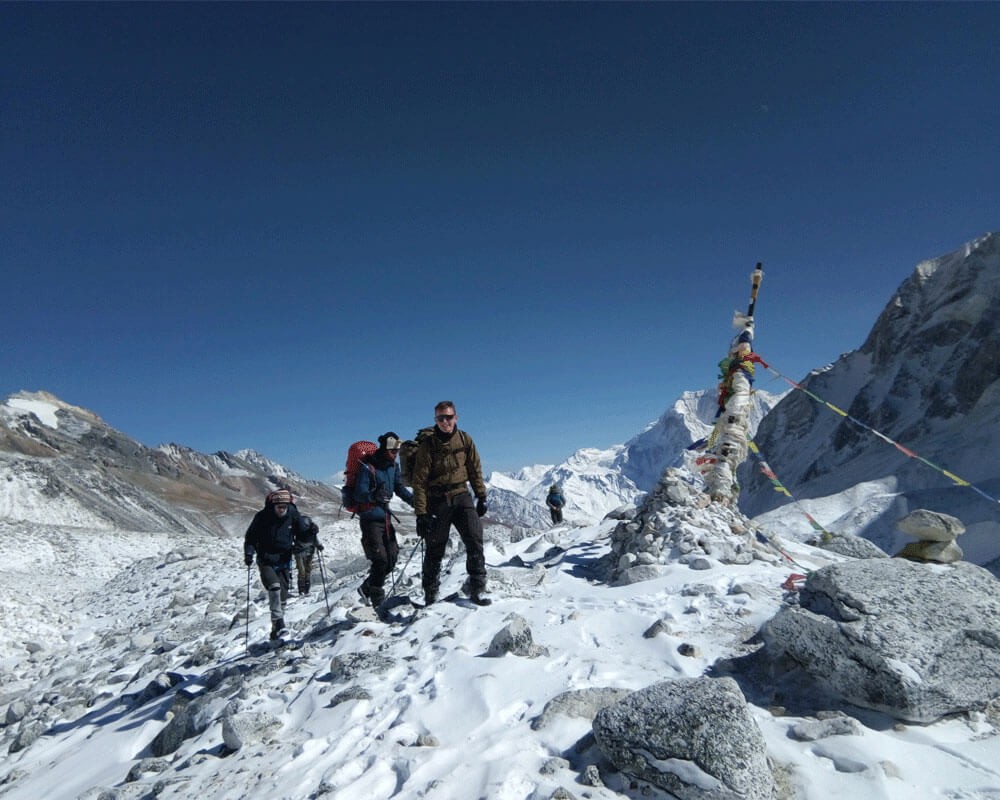
If you are looking for an immersive exploration of this west-central prospect of the Himalayas in the serene secluded path, you might be wondering what is the difficulty level of 12 Days Manaslu Trek. This iconic Himalayan expedition has been graded as a ‘moderately difficult’ adventure.
Although you won’t need any kind of previous high altitude trekking experience or any kind of technical skills to do this trek, you will still need to do adequate preparation to overcome the challenges of this trek. Let’s check out in brief what factors contribute to the overall difficulty level of the 12 Days Manaslu Trek.
Altitude Sickness
Undoubtedly as the 12 Days Manaslu Trek takes place at a higher elevation, altitude sickness is one of the most challenging and concerning factors of this Himalayan adventure. If you have done any kind of high-altitude trekking adventures previously, you then understand the risks altitude sickness poses and how can it even become life-threatening.
The risks for the human body to catching altitude sickness are higher above the altitude of 2,500 meters. Starting your adventure from Machha Khola at 850 meters, during your 12 Days Manaslu Trek you move along the elevation jump points in the trekking route like Lho (3,180 meters), Samagaun (3,520 meters), Bimthan (3,720 meters) and the highest elevation point of the trek Dharamasala at 4,450 meters.
So you have to properly train yourself to minimize the difficulty of altitude gain as well as stay on the lookout for any symptoms of altitude sickness like dizziness, nausea, fatigue, insomnia, and loss of appetite.
Route Difficulty
Although trekking in the route away from the mainstream crowded trails enjoying just the peaceful ambiance of Himalaya’s secluded region certainly can be a treasured lifelong memory. However, remote exploration comes at a cost, you will have to overcome the rugged rocky and lose trails that come along with this adventure.
You will be constantly trekking across the steep segments of the region in your 12 Days Manaslu Trek, traversing across the rocky, loose soil and even glacial moraines, which certainly isn’t an easy feat to overcome.
On top of that in your 12 Days Manaslu Trek, you will cover an approximate trekking distance of 180 km (111 miles). So, you will be walking an approximate trekking distance of 6- 7 hours per day on average. Walking on remote rugged trails for long hours is certainly not an easy job for an underprepared body. If you have any prior high-altitude trekking experience, especially in the Himalayas, or if you exercise and train yourself, then the experience can be slightly less vexing.
Weather Factors
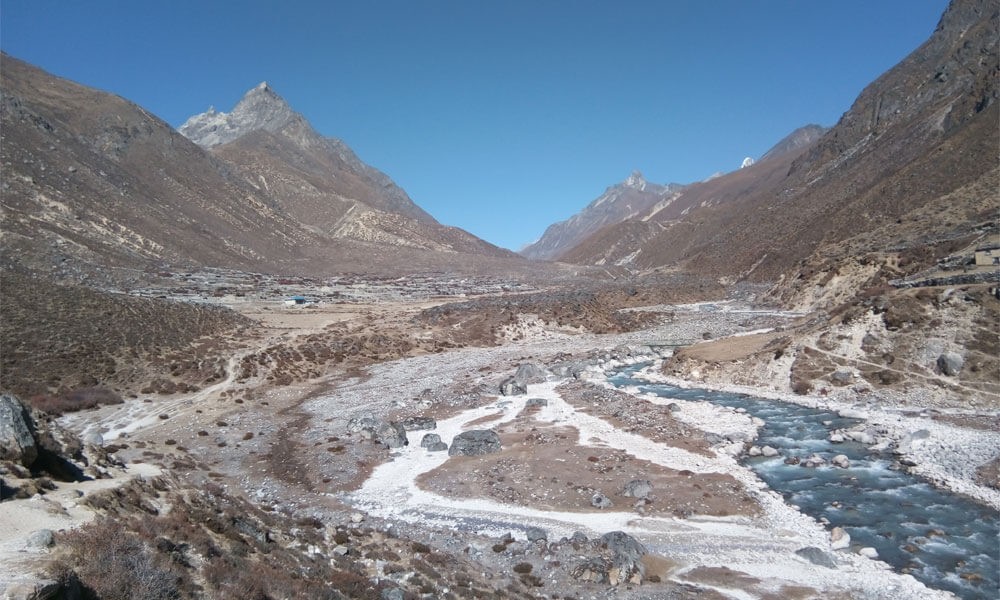
Like how the peak seasons like spring and autumn are the ideal periods for the 12 Days Manaslu Trek, trekking in the off-season winter (December to February) and monsoon (June to August) can significantly increase the overall trek difficulty.
Even among the off-seasons, the monsoon is considered to be the most challenging season for any kind of high-altitude adventure in Nepal. The continuous heavy downpour doesn’t only force you to halt or postpone your schedule but also elevates the risk factors due to sudden landslides and large-scale flooding.
The trails are also muddy and slippery, which can be quite risky if you are traversing across the steep segments where even simple slipping can cause injuries. On the other hand, winter is known as the coldest month in the Manaslu region.
Although the 12 Days Manaslu Trek is year around adventure, you will need special gear and the right clothes to overcome the freezing climatic conditions of the region. The trekking trails are usually covered in snow and the temperature is constantly in the minus degrees.
Furthermore, the teahouses in the higher regions are closed during this season as the inhabitants migrate to the lower regions to escape the extreme cold. So, if you are completely new to the high-altitude trekking adventure, it will be better if you avoid doing 12 Days Manaslu Trek in the off-seasons so you don’t have to face additional difficulty factors.
Acclimatization Days
Acclimatization days are another crucial factor that determines the overall difficulty level of the 12 Days Manaslu Circut Trek. Imagine you ascending over and over to higher altitudes during every day of your adventure, it doesn’t only completely exhaust you but also increases the risks for altitude sickness.
The higher the number of acclimatization in a package, the more success rate of the expedition, your body will also get enough to rest and replenish the lost energy if you have enough acclimatization days.
During a high-altitude adventure, an acclimatization day is recommended after ascending over 1,000 meters altitude. So, if you are new to the high altitude adventure make sure to book for the packages with acclimatization day, a rushed adventure won’t be just hard on your body but you also won’t be able to truly immerse in the beauty of the magnificent Himalayan ambiance.
Remoteness
As we already discussed the 12 Days Manaslu Trek place in a remote secluded part of the west-central Himalayas. It doesn’t only mean that you will be walking on the remote rugged trekking trails but you will be also dealing with overall aspects of the region from food, accommodation, health services, and transportation to technology.
You shouldn’t expect high-end services and amenities during the 12 Days Manaslu Trek as the development of the region is pretty much limited due to the lack of proper transportation mode. Still, you will be able to enjoy the moderate level of services but don’t expect them to be on par with the resort of the exotic vacation destinations.
As for the technology, they are pretty much limited in the trekking trails, even for the electricity, only lower regions have proper arrangements, and the higher regions still depend on solar power. The same goes for the medical facilities, only a limited number of the health facilities are spread along the trail, and in case of any emergency, you will have to rely on helicopter support.
Is 12 Days Manaslu Trek?
.jpg)
Considering the overall difficulty factors of the 12 Days Manaslu Trek, you might be wondering whether this is the right trek for you or not. This beautiful expedition that explores the hidden gems of the conserved area of Manaslu is a once-in-a-lifetime experience to relish the serene secluded magnificence of the Himalayas.
So, if you want to do this trek, you certainly can do it without a hitch, even though it is graded as a moderately difficult adventure, you can easily overcome most of the difficulty factors of this adventure by training properly, staying hydrated, and eating a balanced diet.
As for the altitude gain, our 12 Days Manaslu Circuit is a slow-paced adventure that lets you acclimatize slowly to the rising altitude even while you are trekking. Furthermore, you will also get an acclimatization day Samagaon so you can get enough rest to acclimatize properly to the rising altitude.
Just a basic level of fitness is enough to set out on this marvelous exploration of the Himalayas. However, you should have a good health condition, if you are on any kind of medication, you should consult your doctor and trekking guide about the expedition.
The success rate of 12 Days Manaslu Circuit Trek is at 98%, so basically anyone who has set out for this amazing exploration of the west-central prospects of the Himalayas has most likely successfully completed the expedition.
In case you are wondering about the age restriction for this glorious Himalayan adventure, there are no age bars to do this trek. Even the trekkers over the age of 70 and children under 10 have successfully completed this 12 Days Manaslu Trek. So, at the end of the day, it all comes down to how much willing and determined you are for this Himalayan exploration.
Training and Preparation for 12 Days Manaslu Trek
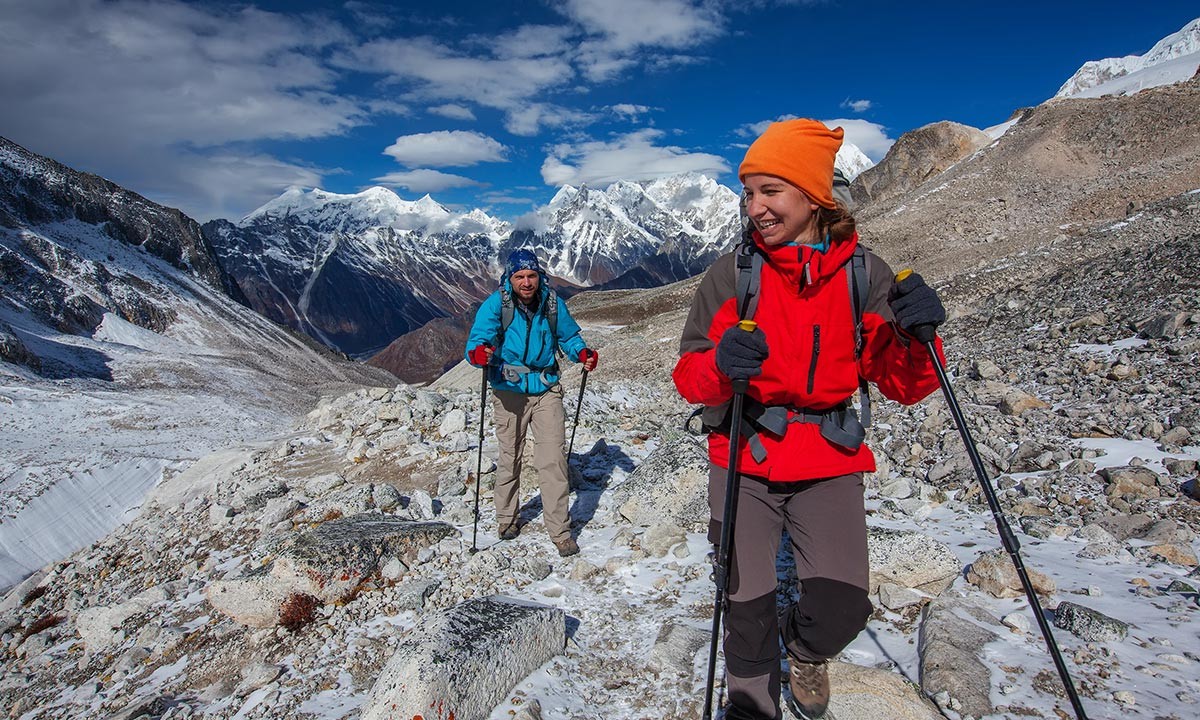
For a more comfortable and enjoyable experience, you definitely shouldn’t miss the training period for your 12 Days Manaslu Circuit Trek. With adequate preparation, you will easily be able to overcome the several difficult factors of the adventure.
Furthermore, each day’s long hour of trekking won't be that much taxing on your body so you can comfortably enjoy the experience and live in the moment rather than barely dragging yourself from one point to another.
The minimum recommended preparation period for the 12 Days Manaslu Trek is 4- 6 weeks, if you already exercise on a routine then you set the preparation period however you see fit. But, in case you don’t have a habit of exercising, you should properly assess your capability and design a training program suitable for you.
Here are a few exercises that you could include in your training program for the 12 Days Manaslu Trek.
Strength and Endurance Exercises: Pull up, push up, planks, deadlifts, pilates, squat, bench press, shoulder press, leg curl, lunge, calf raise, bicep curl, dip, etc
Cardiovascular Exercises: Jogging, swimming, dancing, jumping rope, rowing, mountain climber, jumping jack, lateral shuffles, etc
**Note: It is ideal to do practice hikes on the natural landscapes during your training period, also, stair training is quite effective to overcome the steep segments during the trek which is pretty much consistent throughout the route.
You may also like:
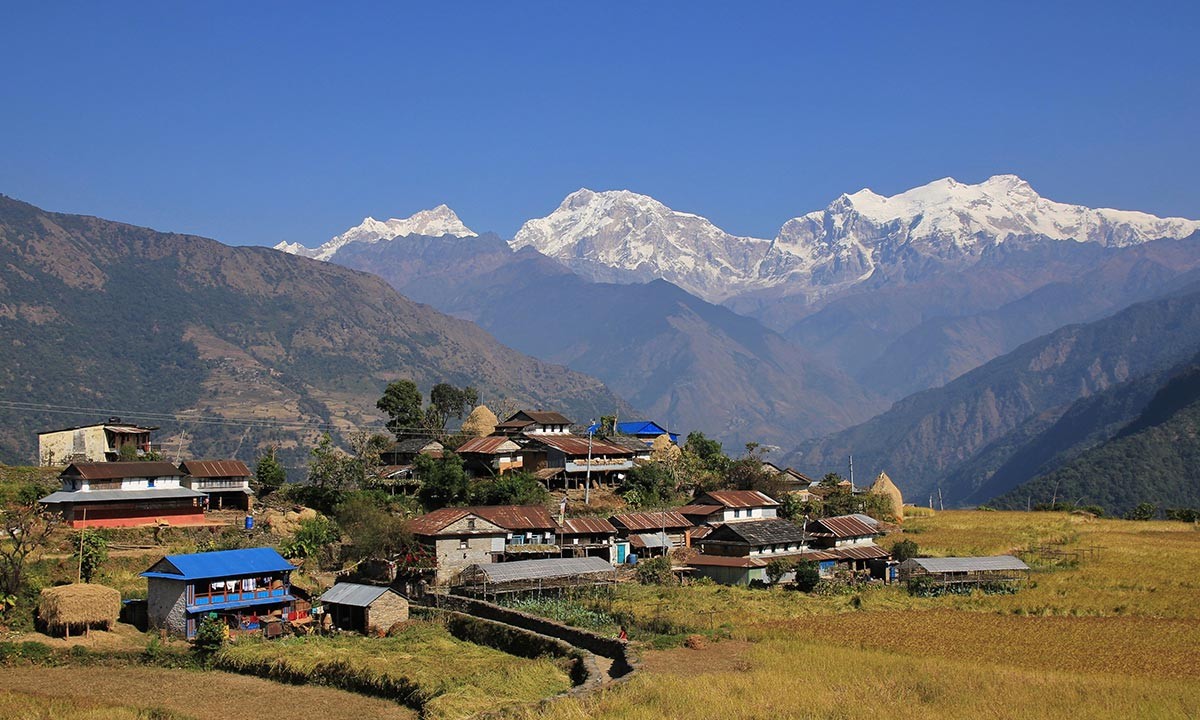
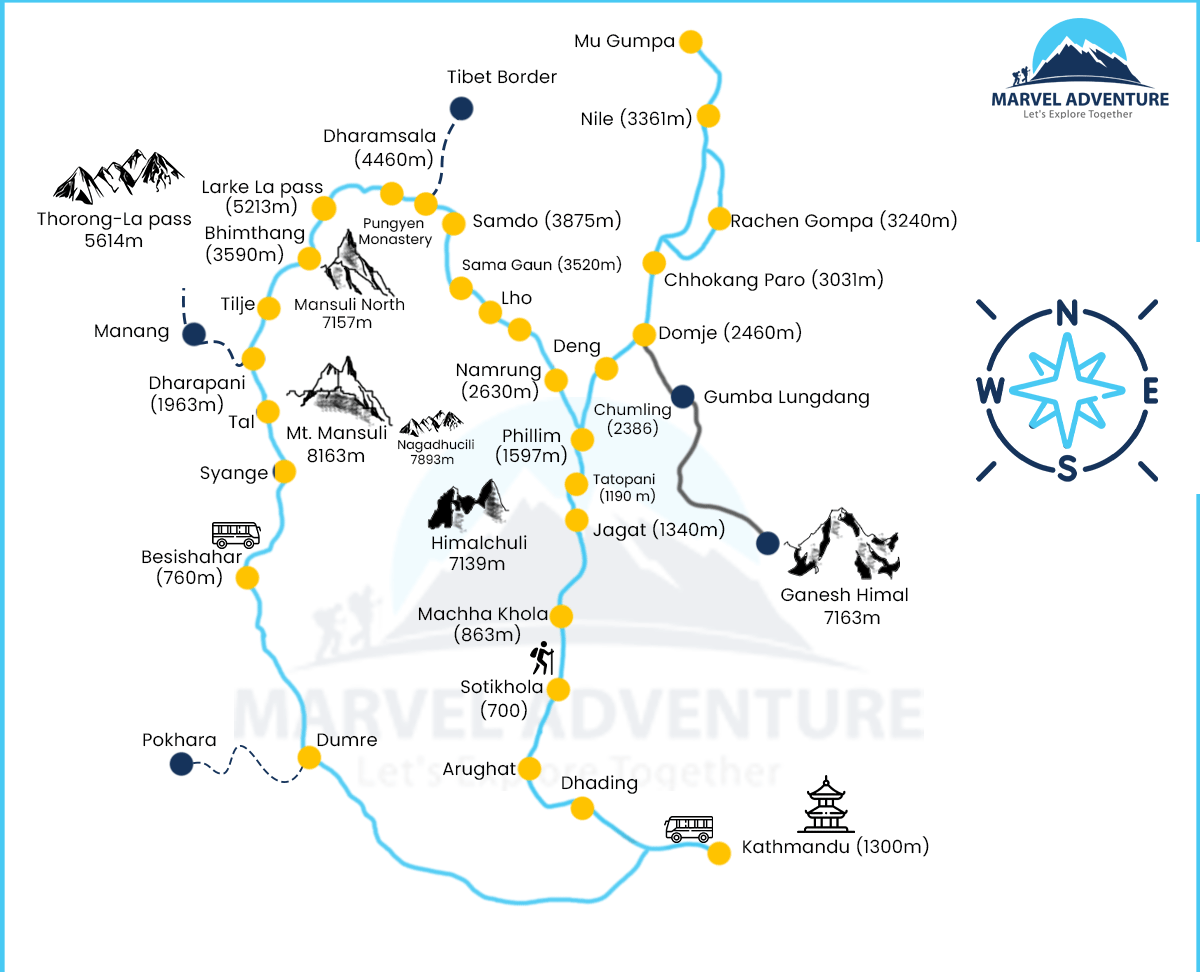


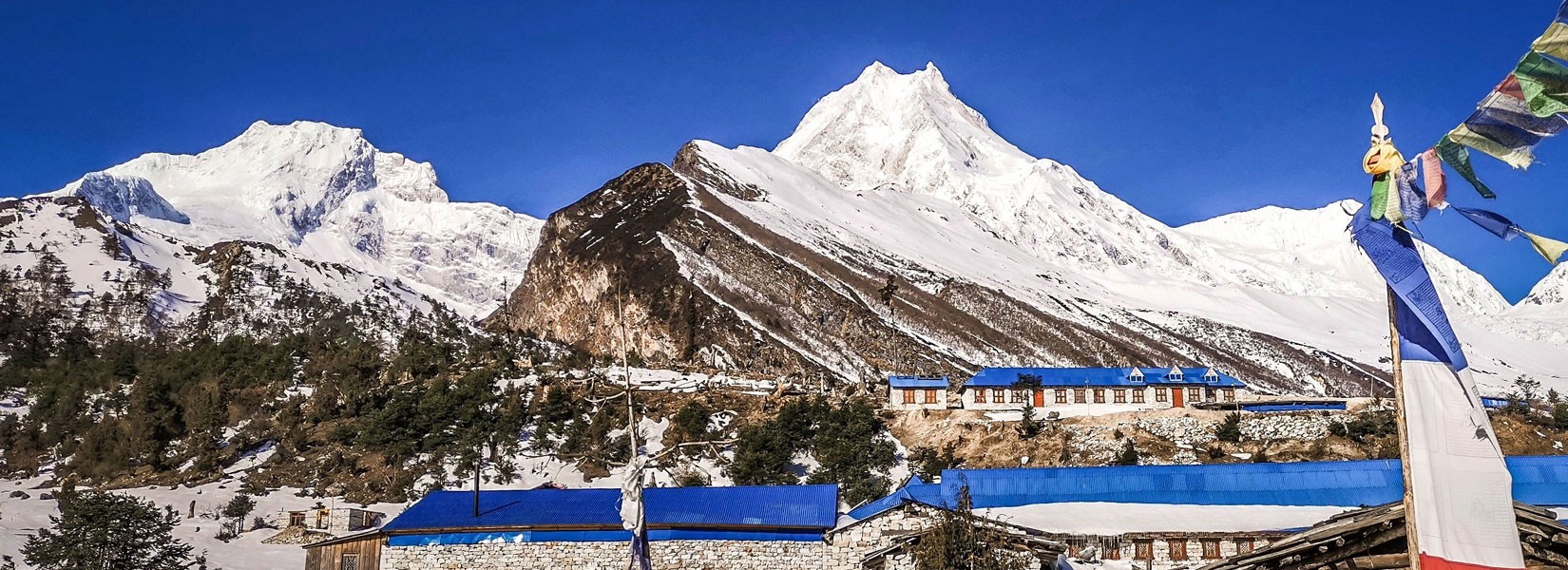
.jpg) If you have any previous trekking experience in Nepal, then you understand the delightful trail and beauty of traveling in the peak seasons. Like any other high-altitude trekking adventures and expeditions, the ideal time period for the 12 Days Manaslu Trek is also considered to be during the peak seasons like autumn (September, October, and November) and spring (March, April, and May).
If you have any previous trekking experience in Nepal, then you understand the delightful trail and beauty of traveling in the peak seasons. Like any other high-altitude trekking adventures and expeditions, the ideal time period for the 12 Days Manaslu Trek is also considered to be during the peak seasons like autumn (September, October, and November) and spring (March, April, and May).

.jpg)

